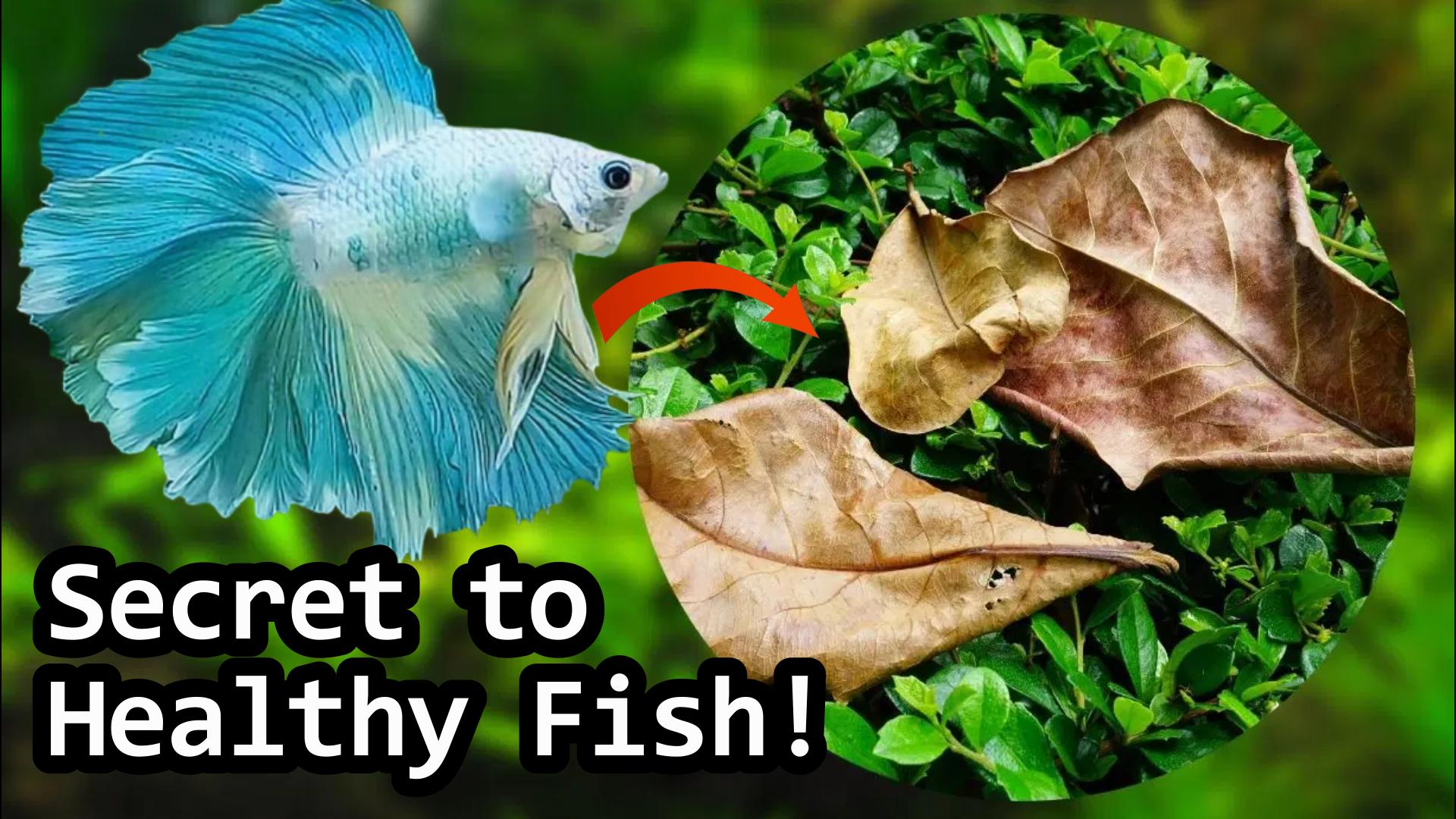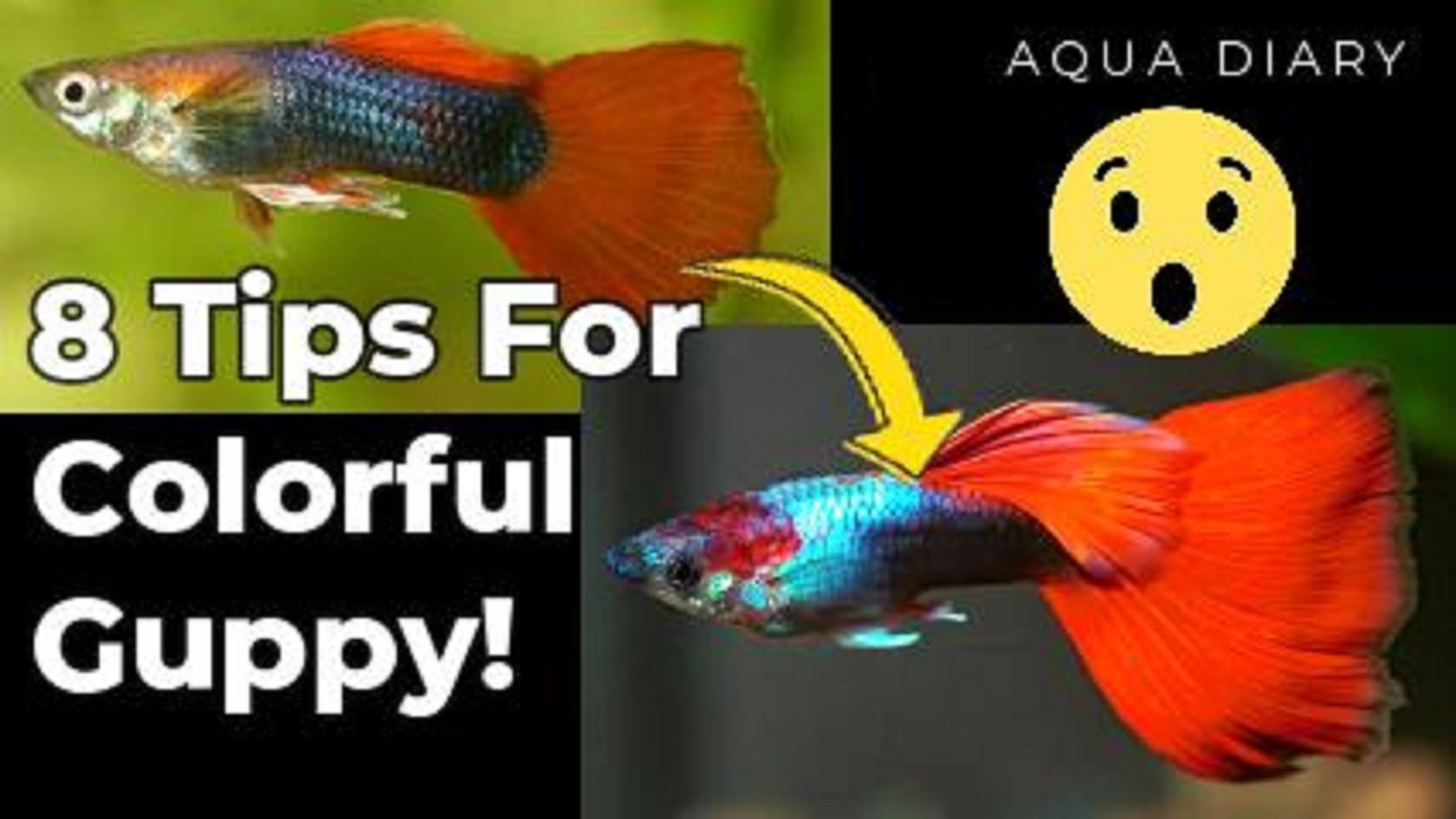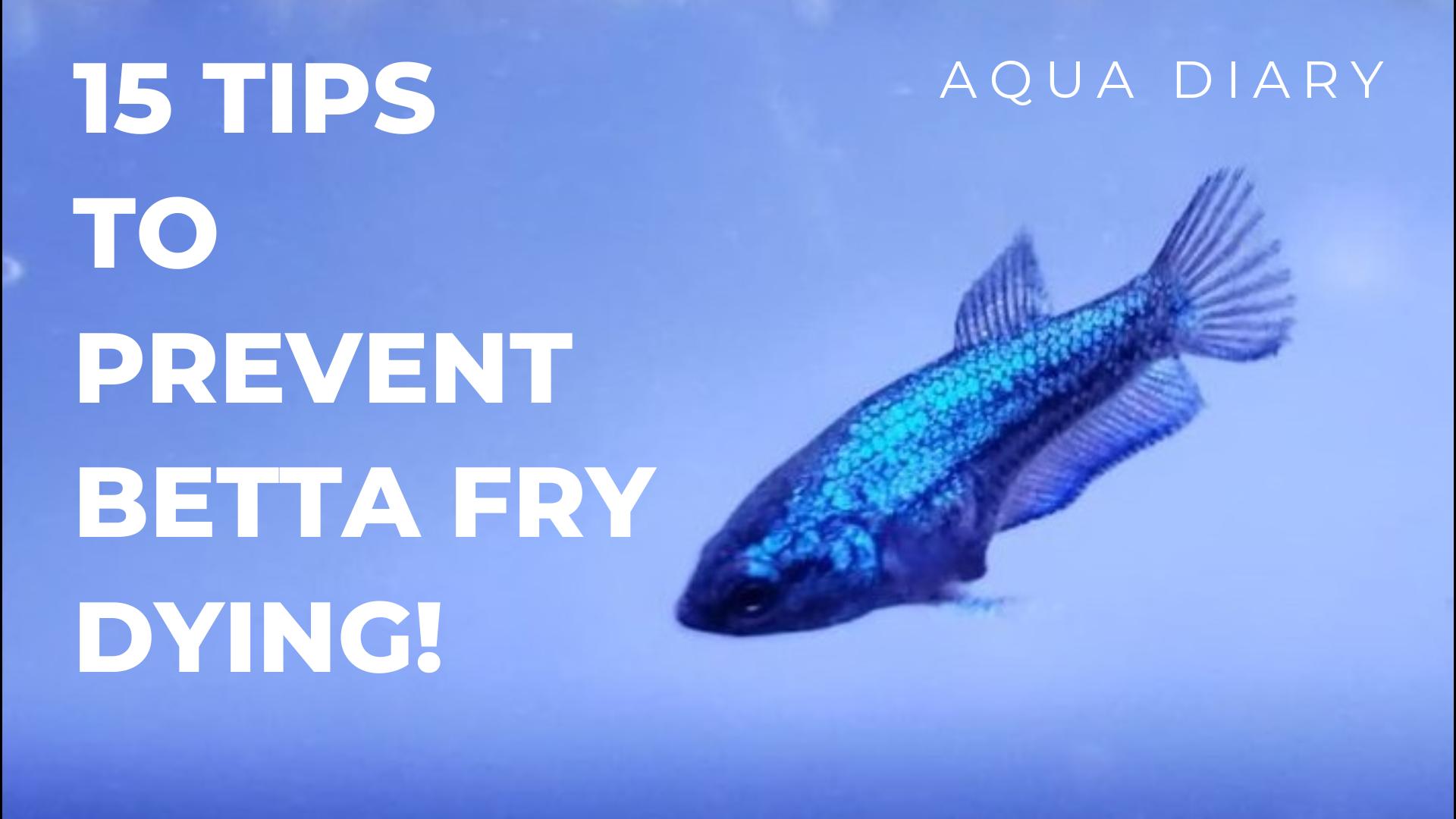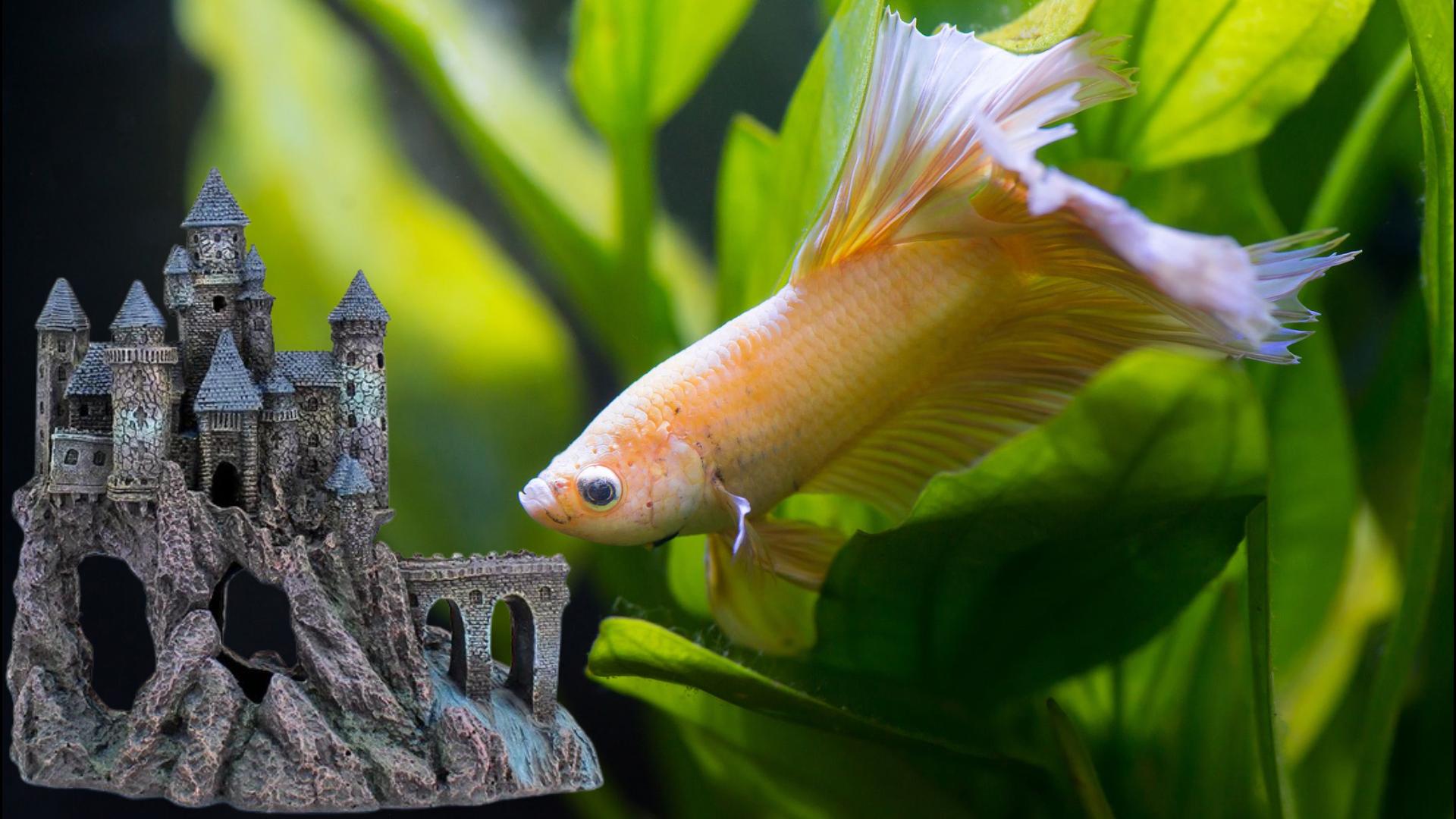Indian almond leaves, also known as catappa leaves, are one of the most popular remedies in the aquarium trade. It’s a very helpful tool if you keep bettas as it offers many benefits for your aquarium. Are you worried about your fish getting sick? Is your Betta lazy?
Do you like to create a natural tank for your fish? In today’s post, I share all you need to know about Indian almond leaves and how to use them.
What are Indian almond leaves?
Indian almond leaves come from the Terminalia catappa tree. They’re called the Indian almond tree because their fruits taste like almonds. These leaves are known as Ketapang leaves in Southeast Asia. The leaves can be small or large, ranging from 3 to 15 inches.
There are several reasons Indian almond leaves are used in aquariums, but I’ll share the 8 main reasons why aquariums need to use them.

What Do Almond Leaves Do for Your Fish?
Almond trees have a particular chemical inside their leaves called tannic acid. The fish benefit from the antifungal and antibacterial properties of Indian almonds when added to water. These leaves help reduce PH levels, making the aquarium more suitable for bettas by improving the overall quality of the water. They also boost the betta’s immune systems against bacterial or fungal diseases, encourage breeding and protect eggs from rotting.
The leaves can be used on any fresh water fish tank keep the water healthy, not just betta tanks. Interesting shorts on using indian almond leaves here.
1. Helps reduce pH
Indian almond leaves help reduce tank pH levels, and it’s probably one of the biggest reasons why many aquarists use them. Basically when Indian almond leaves decompose in your aquarium, they release tannic acid which lowers the pH level.
So if you’re keeping freshwater fish that require low pH levels, Indian almond leaves are great for your tank.
If you are unfamiliar with pH and how it affects your aquarium, pH is a measure of how friendly your tank’s water is. PH stands for ‘power of hydrogen’.
Fish need this at the gill-water interface. As fish breathe, hydrogen creates potential bonding pairs that assist their breathing system. If anything messes up this process, it can impact your fish’s health. So, keeping the right pH in the water is crucial to keeping your fish healthy and happy.
2. Encourage fish breeding
When the water conditions are just right, with a low pH level, and ammonia levels under control, many fish are more inclined to breed. Due to their natural environments being challenging to replicate, many fish species have difficulty reproducing in captivity.
Dark water is preferred by a wide range of fish, as they believe darkness increases the chances of their eggs and fry being safe. Indian almond leaves provide bettas with a darker water color to feel secure when breeding. Check this to know more about betta fish breeding tips.
3. Anti-fungal and anti-bacterial properties
Many Asian breeders believe that catappa leaves have anti-fungal and anti-bacterial properties. At first, I thought it was just a local myth with no scientific basis. Later, I researched catappa leaf antifungal and antibacterial properties. I read studies that show Indian almond leaves have anti-bacterial and anti-fungal properties. So if you’re looking to prevent diseases in freshwater fish,
Indian almond leaves are a great option. It not only help with prevention, but it also acts as a natural treatment for many types of fish diseases. One of the most common diseases ketapang leaves fight is fin rot, which can be both a bacterial and fungal infection.
4. Catappa leaves improve aquarium quality
I know it sounds weird to say that decomposing leaves in your aquarium will improve water quality, but it’s actually true. If you use Indian almond leaves to reduce the pH level of your tanks, ammonia actually becomes non-toxic as it absorbs additional hydrogen molecules to form ammonium.
Also, catappa leaves improve water quality because the decomposing leaves create more beneficial bacteria in your aquarium, which helps nitrogen cycling.
5. Almond leaves provide a place to spawn
Indian almond leaves provide an ideal breeding ground for fish if you’re breeding them. The right water conditions encourage breeding.
But some fish require a specific place to spawn or won’t reproduce. It is more common for killifish to breed in a spawning mop. Betta fish love nesting their bubbles in Catappa leaves.
6. Natural hiding spots and infusoria supply
It is common to use Indian almond leaves in fry tanks, specifically for baby fish grow-out tanks. It provides hiding spots for fry in the leaves. When Indian almond leaves decompose, infusoria grows. Usually, there are no infusoria visible in your aquarium, but when their numbers increase, small white floating things will become visible.
The infusoria form of microworms is one of the first foods that newly hatched fry consume until they are big enough to eat other normal food sources. Additionally, tannins prevent fungal infections on fry and spoil betta eggs.
8. Natural remedies for diseases.
Catappa leaves are a natural remedy for fish skin and scale diseases. Fish with long-flowing fins such as bettas are particularly susceptible to these diseases. It strengthens their immune systems and helps them fight off bacteria, fungi, and viruses more effectively.
9. They are a feast for your shrimp tank
If you keep shrimps in your tank, ketapang leaves will be a feast for them. Once the leaves soften, you’ll see your shrimps gathering and munching on them for days. Actually, It’s adorable seeing all your shrimps eat the decomposing leaf together.
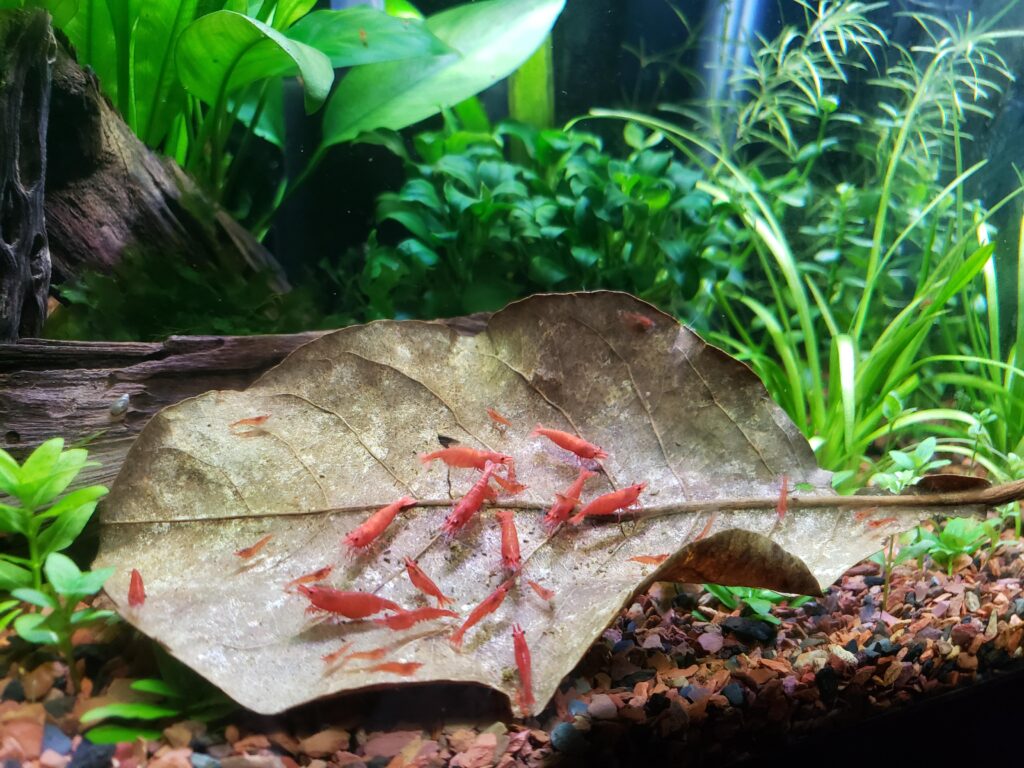
What are the problems with Indian almond leaves?
I can think of two issues with Indian almond leaves. If you throw too many Indian almond leaves into a tank, you might not have enough beneficial bacteria to convert ammonia from the decomposing leaves into nitrite and nitrate.
This can risk ammonia spikes. The second one is more of an aesthetic issue. When these leaves decompose, they break apart. These smaller pieces will float around the tank giving it a messy appearance. In addition, almond leaf water, which is darker in color, often makes your visitors think your tank is dirty.
What are three different ways to put Indian almond leaves in your tank?
There are a few ways to add almond leaves to your tank. Almond leaves will keep your tank healthy and provide medical benefits. In this section, let’s look at the more common ways of adding almond leaves to your aquarium.
1. Put the entire Indian almond leaf in your tank
The first and easiest method is to dunk the leaves in water. They’ll float for a few days, then sink into the water. Let them float and fall naturally into your aquarium.
If you want to keep them at the bottom, you can also put them under a rock or piece of driftwood. They can also be used by fish for bubble nests and hiding places.
2. Shred the catappa leaves before adding
The second option is to shred the leaves. This method is preferred by many aquarists since they release tannins faster and look more natural. It’s also an option to put catappa leaves inside a separate bowl filled with water and wait for them to leach out the tannins.
Instead of adding leaves to your primary aquarium, you can add almond water. This is an option for those who don’t like the appearance of leaves inside their tanks.
3. Make Indian almond leaf extract
First things first, grab a vessel and boil half a gallon of water. Put one or two Indian almond leaves in a glass jar and pour boiling water over them. The more leaves you use, the more concentrated the extract will become.
Leave that jar open and let it chill for a day to release its natural properties into the water. Then, take the leaves out of the jar and remove any floating bits with a sieve. The extract can be kept in the fridge and used whenever needed. Every time you change your water, add a little bit of this portion.
12 Tips you must know before adding almond leaves!
In this section, we’ll uncover 12 secrets and must-know tips for effectively using Catappa leaves in your betta fish tank, ensuring a thriving environment for your aquatic companion.
1. How many almond leaves should you put in the tank?
The general rule of thumb is to put one medium-sized leaf per ten gallons of water. You should keep the same ratio for bigger tanks as well.
The more leaves you add, the more tannins they’ll release, and the darker the water will be. If too many almond leaves negatively affect your tank’s pH level, remove the leaves and perform partial water changes to bring the pH level back to normal.
2. Why does almond leaf water have a different color?
Adding Indian almond leaves to your aquarium will turn the water brownish due to the tannin content that benefits your fish. The more leaves you add, the darker your aquarium water becomes. In case you don’t like the brownish water, make partial water changes to clear it out while still retaining almond leaf benefits.
3. How to choose the right almond leaves?
Picking the right almond leaf is key. If you want its full benefits, feel them with your fingers. If they feel stiff and crunchy don’t get them
The leaves should be soft and bendy so they won’t break and make a mess in your tank. The leaves’ color is important. A deep brown color means the leaves contain more tannins and beneficial compounds while light or yellowish leaves may not provide the same benefits.
4. Can I pick and use Indian almond leaves on the ground?
It is absolutely fine to pick almond leaves that fall naturally from the tree. But do not pick on the floor near roads or cities due to potential toxins. Fresh leaves are the key to unlocking almond leaves’ full potential. They release more beneficial compounds into the water and won’t have mold or bacteria growing on them.
5. Why choose Indian almond leaves over others?
Leaves from Indian almond trees break down slower than those of other trees. They have thick and tough veins on the leaves, and they take a long time to deteriorate compared to other types of leaves. Because the leaf isn’t disintegrating into small pieces, you can easily remove it from your aquarium.
6. How Long Should You Leave Almond Leaves in Your Tank?
You can leave the Indian almond leaves in the tank for as long as you want. These leaves tend to release most of their tannins in the first couple of days once fully sunk into the water. After that, the leaves will decompose. At this point, you can take them out of the tank and replace them.
The leaves usually decompose in one to two months. Fry and shrimp will enjoy the decomposing leaves as they feed on them, as mentioned before. The leaves will also provide an excellent substrate and hiding place for fish.

7. Do We Need To Boil Almond Leaves Before Adding To a Tank?
Adding them to the tank in a normal way is perfectly fine. If you don’t like keeping the leaves in your tank, you can make Indian almond leaf extract and use it instead. These extracts will last for several months, and you can keep them in the fridge and add a bit to the aquarium after every water change.
Boiling the leaves releases tannic acid faster into the water. Boiling also kills bacteria and other organisms on the leaves. So, you won’t get the full benefits of the catappa leaf when you boil them. So just running them under hot water is enough before adding them to your tank.
8. Is there any way of getting rid of the leaf colour?
If you want to remove tannins from the water, you can use activated carbon. This will reduce almond leaves’ properties and keep the water color. However, you must remember that activated carbon will eliminate Indian almond leaf’s positive qualities. Other simpler option is to do frequent water change.
Activated carbon, purigen, and similar products may decrease Indian almond leaves’ effectiveness. So remove them from the aquarium before using Indian almond leaves unless you are trying to control almond leaves’ effects.
9. What happens if I use too many Indian almond leaves?
You will reduce the pH level below the expected range if you use too many leaves. This is especially true if your water already has a nominal pH level.
This is also not ideal for your fish and other creatures. So it’s critical to add the right quantity and know your pH level and water parameters before adding them.
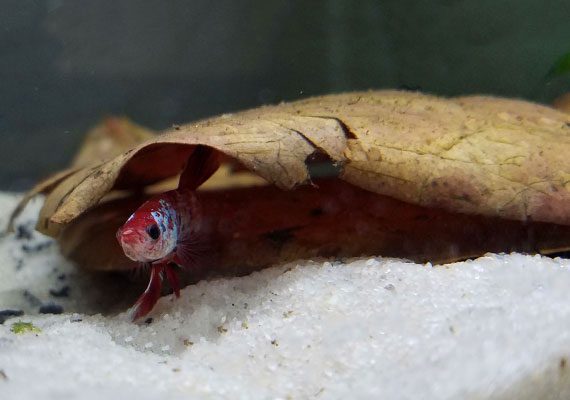
10. Are Indian almond leaves produce more male Betta fry?
There are many rumours about South-East Asian Betta breeders utilizing Indian almond leaves for increasing male-to-female ratios in their batches. In my experience, Indian almond leaves don’t affect breeding and fry growth ratios.
11. Where To Buy Indian Almond Leaves?
Unless you live in areas where Indian almond trees grow naturally, you can look for them in local pet stores, fish stores, or online. The quality of the leaves is essential in terms of how they were harvested, dried, and processed.
I have some almond leaves product recommendations that I have been using for several years, added to my description and first comment. Please check it out if you are interested.
12. What are Indian almond leaves alternatives?
There are many alternatives to Indian almond leaves like peat, Alder cones, wood and banana leaves. Peat is a natural product made of decomposed plant matter.
It is used as a substrate for plants, soil, and even aquariums. Peat is strong and potent, and even just a small amount can reduce pH levels dramatically. Black alder trees, native to Europe and America produce alder cones that look like mini pine cones. Similar to peat, alder cones are powerful.
In my experience, they leech a lot of tannins, so even just a few might be more than enough for smaller aquariums. Aquariums use many types of wood.
The most popular wood type is driftwood. Some wood will leech loads of tannins while others will barely tint your aquarium water, depending on each individual piece of wood. So if you’re looking for a reliable source of tannins that maintains a stable pH level, wood may not be your best alternative.
Also note that not all wood can be used in aquariums, so don’t add random sticks to your tanks. Banana leaves are great alternatives to Indian almond leaves. They are not as strong as ketapang leaves, so you might need more to have the same effect. Banana leaves that have been dried or semi-cooked are good alternatives to consider.
Indian almond leaves benefit your fish in many ways. They can help you alter the aquarium environment as close to their natural habitat as possible. They can protect them against bacteria and fungi, and provide food and protection for their babies.
Indian almond leaves benefit your fish in many ways. They can help you alter the aquarium environment as close to their natural habitat as possible. They can protect them against bacteria and fungi, and provide food and protection for their babies.

